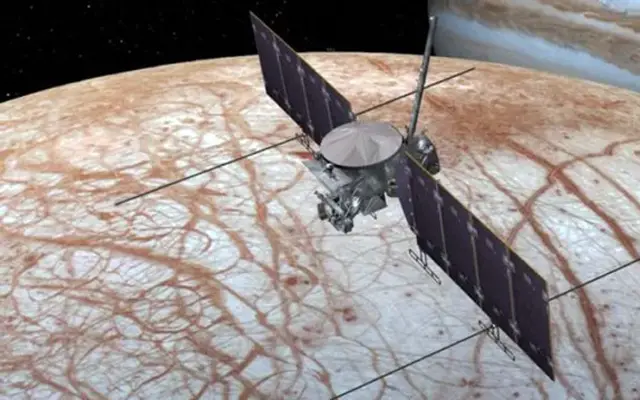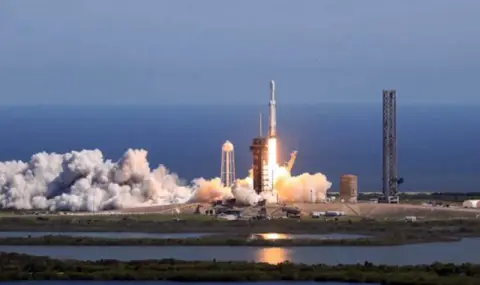October 14, 2024 at 12:06 local time from Pad 39A at the NASA Space Center in Florida, heavy SpaceX's Falcon Heavy rocket launched the Europa Clipper interplanetary station into space. The launch and separation of the station from the upper stage went according to plan, and an hour later the Europa Clipper contacted Earth and reported that its onboard systems were fully operational. The six-year space journey to the Jupiter system has begun.
The Europa Clipper station became the largest interplanetary probe in NASA history. Its weight is nearly 6 tons (5,900 kg). Almost half of the station's mass is fuel. But even armed with 24 engines, the station will perform two gravitational maneuvers to reach its destination: one in four months will be performed near Mars, and in 2026 the station will perform the second maneuver. Europa Clipper will reach Jupiter in April 2030 and begin science work about a year later, when its orbit will be established for close flights with its companion Europa.
Europa is one of the four largest moons of Jupiter. But this celestial body, comparable in size to our Moon, is special. According to a number of indications, beneath the ice armor on its surface there may be a warm and salty ocean with a volume of water greater than that of all the oceans on earth combined. This combination makes Europa potentially suitable for the emergence of biological life as we know it from our home planet. The search for signs of such life will be the main objective of the mission.

In the dim light of the Sun in Jupiter's orbit, the energy to power the station's onboard instruments will be collected by two huge five-segment solar panels: their range reaches 30 meters. The science equipment consists of nine instruments: optical and infrared cameras, an infrared spectrometer, an ultraviolet spectrograph, a magnetometer, a subsurface radar, an ionosphere (plasma) probe, a mass spectrometer, a dust sensor, and a separate instrument for studying Europa's gravity field.< /p>
The scientific mission to explore Europa is designed for just over a hundred days, with the possibility of extension. The station will make 49 close flybys of the satellite, gathering information on faults, ejecting material from geysers and studying its ice sheet, which is 20 to 50 km thick. The maximum approach to Europa will be 25 km, which will allow to collect the most complete data not only on the outer shells of the satellite, but also on its internal structure. These will be literally incredible data, the scientists are sure.
